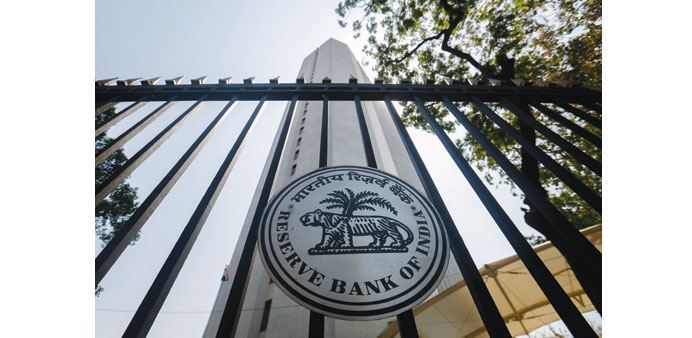The Reserve Bank of India headquarters in Mumbai. The pressure on asset quality continues to be the biggest impediment in improving the performance of banks, especially the public-sector banks, according to an RBI report.
Bloomberg
Mumbai
Loan growth at Indian banks slowed in the six months through September while bad loans rose, signalling increased risks to lenders, the Reserve Bank of India (RBI) said in a report.
“Risks to the banking sector increased due to deteriorating asset quality, lower soundness and sluggish profitability,” the RBI, which is also the industry’s regulator, said in a report Wednesday. Credit growth slowed to 9.4% in the period from 9.7% at the end of March, the central bank said.
Indian companies from steelmakers to infrastructure builders that borrowed heavily to expand capacity in the years after the 2008 financial crisis are saddled with debt they can’t service after the global slowdown. As the nation’s banks struggle to pare stressed assets from a 13-year high, RBI Governor Raghuram Rajan has ordered them to clean up their balance sheets by 2017 to help revive credit growth and spur the $2tn economy.
Slowing loan growth and deteriorating credit quality are threatening to undermine Prime Minister Narendra Modi’s efforts to accelerate the pace of economic expansion. India’s finance ministry last week trimmed its growth forecast to 7% to 7.5% for the year through March, down from a previous forecast of 8%.
Net income at the nation’s banks declined 4.4% in the period due to higher provisions and write-downs, according to the report. The ratio of soured debt to total lending swelled to 5.1% at the end of September from 4.6% at end- March.
Gross bad loans may increase to 5.4% of total by September 2016 before easing to 5.2% by March 2017 in a “baseline scenario,” according to the study, which measures risks using a so-called banking stability map, which tracks factors including profitability, asset quality and liquidity.
“The pressure on asset quality continues to be the biggest impediment in improving the performance of banks, especially the public-sector banks, which needs to be tackled head-on to ensure that bank credit growth is not allowed to settle at a level lower than what is considered optimum,” the RBI said.
Mining, iron and steel, textiles, infrastructure and aviation, which constituted 24% of the total bank loans as of June 2015, contributed to 53% of the total stressed advances, the central bank said. Stressed asset ratio increased to 11.3% as of September from 11.1% at the end of March.



